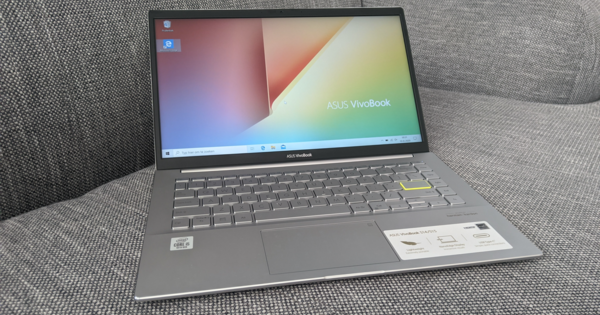Google recently caused a stir when the company dusted off its old Notebook service and relaunched it as Keep. Google's new software wants to get a piece of the cake in a space currently dominated by Microsoft's OneNote and Evernote. So it's time to put these three note-taking apps side by side.
You can think of these tools as souped-up sticky notes. They're great for keeping track of daily tasks and storing rich media content, as well as organizing tasks at work.
Whether you're about to use a note-taking app for the first time or considering switching from your current note-taking app to another, you should think about the features you need most. For example, one app may excel in OCR support, while another may be best for general access, while a third may be ideal for sharing content within a team. To help you make an informed decision, let's take a look at how Google Keep, Microsoft OneNote, and Evernote perform in different categories.
The prices
Google Keep is available over the web and as an Android app. Both versions are free. OneNote and Evernote have web and app elements that you can use for free, plus paid premium editions.
OneNote is available as part of a Microsoft Office 365 subscription, starting at $100 per home user per year. It's also bundled in Office desktop suites, starting at $140. As a standalone product, OneNote 2013 costs $70. You can use OneNote for free as a web app via Microsoft SkyDrive, and on Windows Phone, Android, or iOS. The Office version offers additional features, such as the ability to send or “print” screenshots or documents directly to OneNote.
Evernote is free up to and including 60MB of data per month. The data limit of the Premium upgrade ($5 per month or $45 per year) is 1GB per month. You also get faster performance, better security, and more advanced search capabilities. For $120 per user per year, Evernote for Business gives IT administrators supervision and control, with additional collaboration options.
Winner: All three applications have free options, so we can't say that any of them is too expensive. But as for the paid versions, Evernote offers more functionality through apps and add-ons.
Platforms and ecosystems
With a note-taking tool, you want to be able to capture text, voice notes, images and web pages on the go, no matter what device you have in your hand. Google Keep is the newest platform, and it also has the most limited reach: Over the web and Android.

The Evernote app for Windows 8.
We've had no official confirmation, but you can reasonably expect Google to eventually develop iOS and Windows Phone versions of the Keep app. So far, Keep is best suited for Google-focused users using Google Drive's online storage and productivity tools.
OneNote provides access from the web, plus apps for Windows Phone, Android, and iOS. For Windows, OneNote is available within Microsoft Office and as the OneNote MX app for Windows 8. With the exception of OneNote 2013, which is part of Office 365 or Office 2013, all other OneNote options are free. If you prefer Microsoft services and devices, OneNote is the best choice.
Like Google Keep and OneNote, Evernote provides web-based access, and also offers native apps for Android, iOS, Windows Phone, and BlackBerry, plus dedicated client software for Windows and Mac OS X. Evernote has developed an extensive community and offers a variety of proprietary apps and third-party apps on its Trunk website.
Winner: Evernote is available on more platforms, and it is not tied to a specific brand.
Organization
Google Keep lets you view notes in the browser as a list or grid that resembles neat sticky notes. You can assign colors to your notes, but you can't order or group them.
However, OneNote and Evernote work with a notebook-with-notes metaphor. You can create a notebook for a specific topic – such as a website project, summer vacation, or income taxes – and create multiple notes within it.
OneNote and Evernote also allow you to tag notes with keywords. You can create individual notebooks in OneNote. Each notebook can have multiple sections, and each section can be multi-page color-coded. The desktop version of OneNote allows you to create a Section Group, the equivalent of embedding one notebook in another notebook. Evernote has a similar feature that allows you to group notebooks into so-called Stacks. Evernote Business users can group professional content in a Business Library.
Keep's system is only good for keeping a small number of notes. If you really rely on your note-taking tool, you need the extra features of OneNote or Evernote.
Winner: Evernote offers more features to organize your information.
rich media
Note-taking apps are strongest when you use them for more than just text. Google Keep on the web just lets you add an image from your PC, while the Android app also lets you take photos or record an audio clip. Keep transcribes the audio to text, and both the audio and text are embedded in your note.

Notes in the browser version of Google Keep.
The free versions of OneNote allow you to insert web links, text, and images. With the paid OneNote version included in Microsoft Office, you can also add audio clips to your notes. With the OneNote desktop software for Windows, you can scan an image and insert it right away, or add screen clips, Excel spreadsheets, and other files.
The web version of Evernote is quite limited, but the mobile apps collect photos, audio clips, and other files. The real difference is in Evernote's ecosystem of apps, which let you scan receipts directly into Evernote, for example, or convert handwriting to text. For example, Evernote's Penultimate for the iPad offers handwriting recognition, Skitch lets you mark up images, Web Clipper and EverClip store web pages, and Hello for the iPhone manages your contacts. Evernote even stores handwritten notes and audio from Livescribe Sky digital pens.
Features vary depending on the hardware and software you have on hand. For example, in both the desktop version of OneNote and the OneNote MX app for Windows 8, you can annotate OneNote notes using a digital pen, but only if you have a touchscreen device and a digital pen to work with.
Winner: Evernote's ecosystem of apps extends its capabilities with rich media.
text editing
While a note-taking tool isn't meant to replace your word processor, it should make your text look better than a jumble of misaligned characters. After all, you're trying to organize things.
With OneNote for Android, you can add text, create a numbered, unnumbered, or checkbox list, or insert a photo into a note. You cannot format the text.
OneNote on iOS is similar, but it lacks numbered lists, although the OneNote app for Windows Phone does allow you to have numbered lists and text formatting. The web and Office versions of OneNote offer more extensive text editing capabilities, while the OneNote MX app for Windows 8 uses an innovative radial menu for formatting.
When you insert a checkbox on Evernote's Android or iOS app, Evernote automatically creates a checkbox on each new line when you tap Enter. On the browser version, on the other hand, you have to manually add the checkbox to the beginning of each line; if you have to repeat this often, prepare yourself for some serious annoyance.
Winner: It makes sense that OneNote, brought to you by the makers of Word, offers the most advanced text formatting.
Business functions
Google Keep has no business features or tools for IT administrators. At least not yet.
OneNote, on the other hand, supports management functions via SharePoint or SkyDrive Pro. The IT administrator can manage corporate data stored there, as well as user access with Active Directory and Group Policy. You can share notebooks with the entire company, or with specific people or teams. Individuals can access their personal OneNote notebooks on SkyDrive, as well as the corporate notebooks they are authorized to access on SharePoint or SkyDrive Pro.

Content in the browser version of Microsoft's OneNote.
Like OneNote, Evernote Business allows companies to manage notes and data related to the business, while allowing individual users to create and maintain personal notes and notebooks outside the control of the IT administrator.
Winner: Evernote is easier to manage than the SharePoint or SkyDrive Pro back-end for OneNote.
data management
When you make intensive use of a note-taking tool, it quickly becomes an indispensable storage place for data. You have to trust that the service will continue to exist, and that you can still access your data if that is not the case.
Keep in mind that Google can be fickle. The company has already retired more than 70 features or services since it began its “clean up” in 2011 (rest in peace, Google Reader).
With both Evernote Business and OneNote with SharePoint or SkyDrive Pro, business data is the property of the employer and remains under the control of the IT administrator. If a user leaves a company, he or she will no longer have access to the company's notebooks and data, but the person will still have access to his or her personal notes.
When an Office 365 subscription expires, the locally installed OneNote software reverts to read-only mode. However, the data is still on SkyDrive, and you can still use OneNote via the browser or with mobile apps.
All three services clearly state that you are the owner of your data. However, this is of little comfort if the company goes bankrupt or the service is terminated.
Winner: Draw. All three services guarantee ownership of the data in much the same way, but do not offer the option of exporting or archiving your data outside of their native formats.
The champion
Google Keep, Microsoft OneNote, and Evernote each have their own advantages. However, unless you're Google-focused or Microsoft-centric, Evernote is the most diverse and capable service.
Google Keep is nice and simple, but the possibilities are very limited.
OneNote is a special product and comes second only to Evernote. While OneNote is available for a variety of platforms and devices, it's still a Microsoft tool, so it doesn't have the platform-agnostic approach and strong third-party support that makes Evernote so powerful.
Winner: Evernote provides users with a strong note-taking platform for free, along with customization and extensive capabilities through apps and add-ons. Plus, Evernote's version for businesses is simple and affordable.
This is a loosely translated article from our sister site PCWorld.com, written by Tony Bradley (@bradleystrategy). The author's opinion does not necessarily correspond to that of ComputerTotaal.nl and the prices quoted are from the United States.

